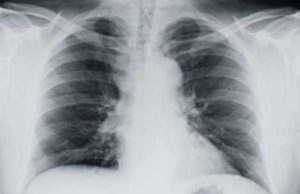
What are the Asbestos Laws in California?
California, unfortunately, has some of the highest numbers of mesothelioma patients each year. If you work in an asbestos environment and have been exposed to the fibers for an extended period of time you must contact a qualified California mesothelioma lawyer. The state of California regulates asbestos use and releases annual public health reports to document asbestos laws every year. This release creates suitable legal basis for mesothelioma victims to engage in mesothelioma suits for the delivery of compensation. Because of this maneuver, it is easier for a mesothelioma lawyers California to achieve the following:
• File asbestos or mesothelioma claims against their clients’ former employer(s)
• Litigate over the case without the need of further research
• Obtain higher mesothelioma settlements
The California Environmental Health Laboratory Branch of the Indoor Air Quality Program defines asbestos as a mined fiver that is resistant to heat and chemical attacks. The state also states that asbestos is in possession of unusual tensile strength has incredible electrical resistance. Because of these traits, the deadly mineral was often utilized in building materials.
The California Department of Health Services places a warning on all residences and dwellings built after the 1950s that contain asbestos materials or materials that are commonly mixed with asbestos including paper or fiberglass. While the most common material in the state that contains asbestos fibers is “cottage-cheese ceiling insulation” the mineral may also be found in patching compounds, floor tiles, stove and pipe insulation, heat resistant gaskets, furnaces, sliding materials, roofing materials and an assortment of appliances produced before 1979.
The state of California acknowledges that being in close proximity or touching said materials is not harmful to a person’s health; however, when asbestos fibers are disturbed they release carcinogenic dust into the air where they become susceptible to inhalation and lodging in the tubules of the lungs. While the bulk of individuals are exposed to only trace amounts of asbestos fibers, persistent exposure will invariably increase the risk of developing asbestos-related disease, including mesothelioma cancer. The risk of developing cancers greatly increases during demolition or renovation projects. When these projects are undertaken on dwellings that contain asbestos it is likely that said materials will be disturbed, shooting asbestos fibers into the air. Because of this, many home and business owners should have their properties tested for asbestos content before undertaking in such projects to ensure that any asbestos contained in the dwelling is contained prior to demolition.
California requires all employees and contractors who work on asbestos projects involving over 100 square feet with a concentration above 0.1% asbestos to register with the state’s Asbestos Contractors’ Registration Organization. California distinguishes between certification for handling asbestos containing materials into five categories for training, including the worker, the contractor or supervisor, building inspector, project designer and management planner. The courses required for each specialty contain different requirements and general requirement, but to remain eligible in any of these areas workers must complete an initial asbestos training course along with an annual renewal examination. These courses are required to be completed with a state-certified training facility that adheres to strict rules and regulations. For this reason, it is crucial to let a certified worker who is trained in the safe handling of asbestos containing materials to handle all asbestos-related projects and works.
It is nearly impossible to detect the presence of asbestos fibers through a generic inspection. For this reason, licensed professionals equipped with specialized equipment must be hired for the job in the state of California. These individuals will use a polarized light microscope where there findings will be sent to lab technicians for further examination. The lab will examine the samples and determine whether or not the culture is dangerous. Luckily, these tests are relatively cheap, costing only around $40 for one sample. The state of California currently operates 38 certified asbestos labs. If your residence is deemed dangerous due to the presence of asbestos fibers, the state of California provides you with three options: have the asbestos removed by a professional, contain the fibers with sealants or simply live with the dangerous mineral. Again, in renovation and demolition projects, sealants are not recommended to protect workers from asbestos exposure; once the mineral is damaged it releases the fibers into the air. As a result, asbestos abatement is necessary in the bulk of renovation or demolition projects.
Asbestos Abatement Laws in California:
If your site requires the removal of asbestos, all workers on the site must take a series of precautions to properly adhere to California asbestos regulations. First, the workers must wear respirators and several layers of protective clothing—the amount of layers is dependent on the concentration of asbestos in the area. Other procedural regulations regarding asbestos abatement will differ depending on whether the project is classified as a Class I, Class II, Class III or Class IV abatement project. A Class I abatement project includes the removal of floor tiles, wallboard, sheeting, roofing and construction materials that contain the mineral.
A Class II abatement project must be executed within regulated areas that are enclosed from other areas that must remain undisturbed. Within this area, there must be a state approved air system in place to ensure that undue contamination does not take place. Moreover, all asbestos-containing materials must be soaked with water before they are removed to limit the amount of airborne carcinogens. Also, all tiles, flooring, roofing and other asbestos containing materials must be removed in an intact form unless determined by the contractor that such as maneuver is impossible. A Class III abatement project follows the same rules as a Class II project but adds the following provisions: dry cutting of asbestos containing materials is not allowed during the removal process. And all material containing asbestos fibers must not be dropped or thrown to the ground; these materials instead, must be carefully lowered and quickly stored in a contained unit or placed in receptacles that are labeled with “danger” signs. When all asbestos containing materials are removed the region must thoroughly cleaned using a HEPA dust machine or vacuumed (wet cleaning is also permitted under California asbestos abatement law). Dry sweeping is only permitted under certain circumstances.
All licensed asbestos workers in the state of California are familiar with these laws. These individuals are expected to follow every regulation to ensure a maximum level of safety for their clients and fellow workers.
Once an area is rid of asbestos containing materials it is the contractor’s responsibility to arrange for an appropriate disposal procedure for the containers that contain hazardous asbestos waste. This process is also regulated by the State of California. If you are planning on undertaking a renovation or demolition project and you suspect that your home or business contains asbestos containing materials, you must speak with a certified mesothelioma lawyer or a certified California contractor to affirm your removal options.
What is the State of California Air Resources Board?
The California Air Resources Board is a governmental organization that is responsible for regulating an assortment of factors that are known to cause air pollution. Some of the primary pollutants regulated by the California Air Resources board include: aerosol glue mixtures, black asbestos and chrysotile asbestos fibers.
Asbestos disclosure accomplished by some organizations has provided California mesothelioma lawyers with valuable information; this data is used by California mesothelioma and asbestos lawyers to litigate over cases that would been out of their reach several years prior.
Mesothelioma compensation laws are further developed to stop employers from neglecting their workers. The California state government has instituted an assortment of asbestos regulations to bolster a mesothelioma patient’s chances of securing compensation. Asbestos laws therefore put pressure on companies and manufacturers in the asbestos field to maintain a safe working environment.
All California mesothelioma lawyers recommend all mesothelioma victims to take not of California mesothelioma laws. Understand that California is on your side; the state’s asbestos regulations are some of the toughest in the nation.





























